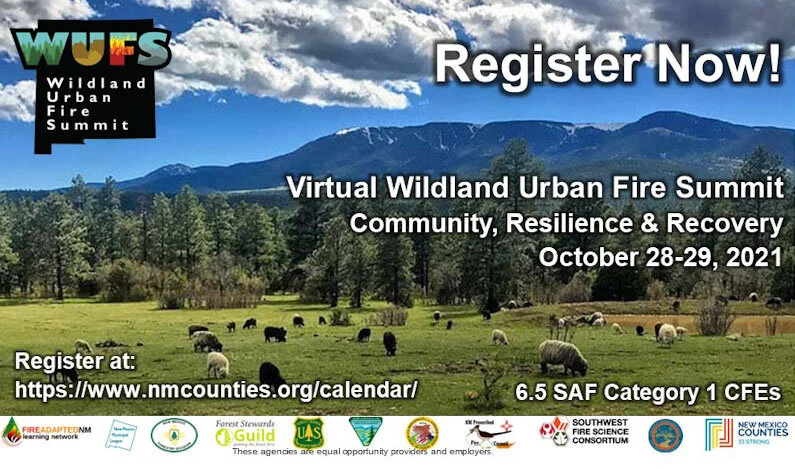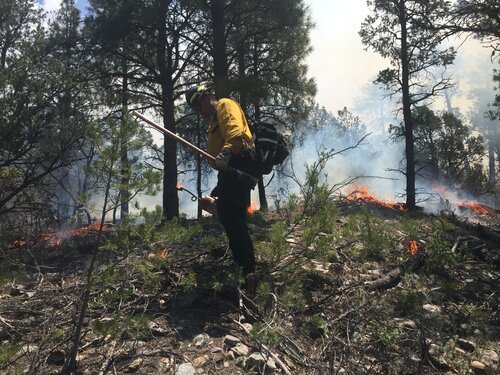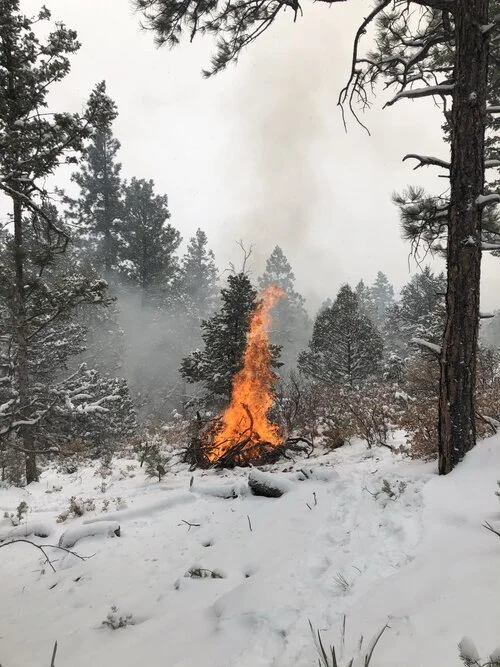Happy Wednesday fireshed community!
We hope you’re enjoying fall and are excited to safely celebrate Halloween this weekend! Many prescribed burns are occurring throughout the state this month, check out NM Fire Info to stay informed and read our previous blog post on prescribed fires to learn more on why these burns are important. This week we’re sharing information on Community Wildfire Protection Plans (CWPPs) which are an important tool in protecting communities from wildfire risk and damage.
This week’s Wildfire Wednesday features information on:
What is a Community Wildfire Protection Plan (CWPP)?
New Mexico CWPPs
An active forest management success story: 2020 Medio Fire
Rural Voices for Conservation Coalition’s “Fighting Fire with Fire: Policy Options to Increase the Use of Prescribed Fire on National Forests”
Coyote Creek prescribed fire announcement
What is a Community Wildfire Protection Plan (CWPP)?
From the National Wildfire Coordinating Group:
“A plan developed in the collaborative framework established by the Wildland Fire Leadership Council and agreed to by state, tribal, and local government, local fire department, other stakeholders and federal land management agencies managing land in the vicinity of the planning area. A Community Wildfire Protection Plan (CWPP) identifies and prioritizes areas for hazardous fuel reduction treatments and recommends the types and methods of treatment on Federal and non-Federal land that will protect one or more at-risk communities and essential infrastructure and recommends measures to reduce structural ignitability throughout the at-risk community. A CWPP may address issues such as wildfire response, hazard mitigation, community preparedness, or structure protection - or all of the above.”
source: NM EMNRD
From the New Mexico Energy, Minerals and Natural Resources Department (EMNRD):
Community Wildfire Protection Plans have 3 primary components:
Collaboration with all stakeholders throughout the CWPP process,
Identification and prioritization of hazardous fuel reduction areas, and
Addressing the treatment of structural ignitability within the CWPP area.
“A CWPP should identify areas that need vegetative fuels removed to reduce wildfire risk and severity, suggest methods to reduce structural ignitability, and evaluate a community’s firefighting capacity. This planning process helps unite communities by identifying their risk to wildfire, their community values, and their critical infrastructure. Factored together, these concerns should produce a prioritized list of vulnerable areas to be treated, as well as the potential treatment options.”
New Mexico CWPPs
All of the counties in New Mexico either have a complete CWPP in place or are in progress of developing a complete CWPP. CWPPs in New Mexico must be approved by the Fire Planning Task Force which consists of “of local, state, federal, and tribal cooperators who assist Forestry to identify and protect areas most vulnerable to wildfires.” CWPPs are reviewed by the 1st of December each year so keep an eye out for updated CWPPs coming out soon!
An active forest management success story: 2020 Medio Fire
“The Medio Fire was a lightning-caused fire reported on August 17, 2020, on the Española Ranger District of the Santa Fe National Forest in New Mexico. During the first couple days, the Medio Fire made significant sustained runs as a high-intensity crown fire. These runs resulted in 16% high-severity burn within the total burned area. But thanks to pre-fire treatments that mitigated fire behavior, 49% of the fire burned at low severity. The 4,010-acre Medio Fire was managed with a suppression strategy, consistent with national USFS policy during the 2020 wildfire season. The 2019 Pacheco Rx (a prescribed fire) and fuel break thinning treatments played the biggest role in reducing fire intensities and preventing further fire progression to the south and east. Two large scale collaborative projects led to the treatments that mitigated fire behavior. These projects encompass all three of the priorities laid out by the National Cohesive Wildland Fire Strategy: 1) landscape resilience, 2) fire adapted communities, and 3) safe and effective fire response.”
Rural Voices for Conservation Coalition’s “Fighting Fire with Fire: Policy Options to Increase the Use of Prescribed Fire on National Forests”
“This report provides an overview of the current science and need for prescribed fire, describes barriers to the use of prescribed fire on public lands in the western U.S. managed by the Forest Service, and described policy options to overcome these barriers… prescribed fire is unique in serving to both reduce the risks associated with wildfire and to help restore ecological function in natural systems.”













